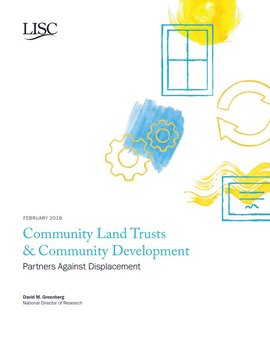Pathways to Tenant and Community Control: Financing Strategies for Community Land Trusts
The LISC Institute for Community Power and LISC Bay Area hosted a conversation with Filipino CDC, Oakland Community Land Trust, and San Francisco Community Land Trust for a conversation on how to build power and secure resources to expand tenant and community control of housing.
Overview
From the Bronx to the Bay Area, tenants are organizing to buy their buildings to fight displacement, preserve affordability, and improve housing quality, often in partnership with community land trusts (CLTs). Early this year, tenants at 285 Turk Street in the Tenderloin neighborhood of San Francisco made headlines with the San Francisco CLT when they closed on their 40-unit building after a powerful organizing campaign. More recently, the residents of 1534 29th Avenue in the Fruitvale neighborhood of Oakland saw the results of more than two years of organizing when Oakland CLT closed an acquisition of their building. Both acquisitions received low-cost financing via LISC Bay Area and the Partnership for the Bay’s Future. In this webinar, panelists reflected on the role of CLTs in these acquisitions, and the tenant organizing and financing sources that made them possible. Panelists discussed the partnerships, local policies, loan terms, and private fundraising strategies that helped tenants win control of their housing.
View recording
Moderator
- Julia Duranti-Martínez, LISC Community Research and Impact
Panelists
- Cindy Wu, LISC Bay Area
- Lorenzo Listana, Filipino CDC
- Saki Bailey, San Francisco CLT
- Steve King, Oakland CLT
Additional reading
- California CLT Network Guides and Toolkits
- Opportunity to Purchase Act Campaign Playbook
- Some learnings about how lending and capital can be used to support tenant-centered housing preservation
LISC resources

LISC research offers rigorous evidence that large landlords have reaped the greatest profits in communities of color, and that this speculation drives evictions and poor housing maintenance quality. But there’s good news too: affordable housing investments create better-maintained homes and remove buildings from the speculative market.

A white paper from the LISC Research and Evaluation team examines how partnerships between community land trusts and community development institutions can scale up and sustain land trusts so as to begin to impact displacement at the neighborhood level.